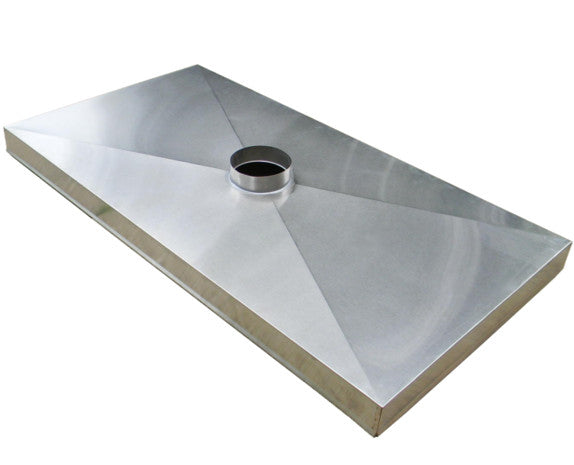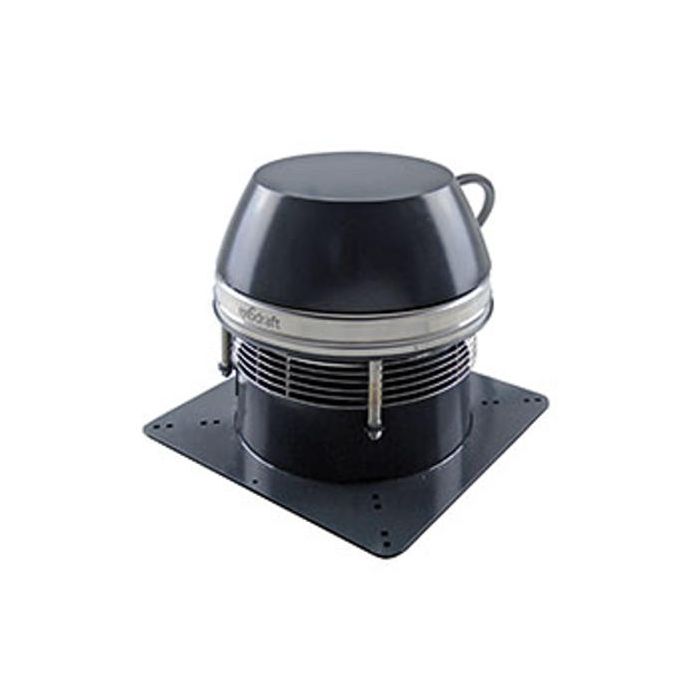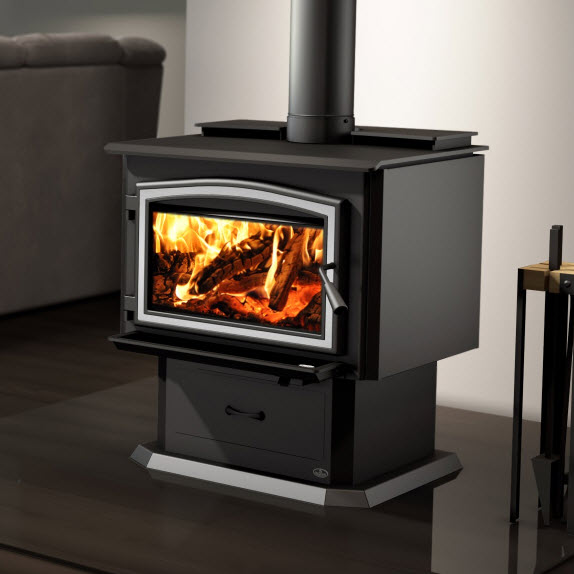How Do Chimneys Work? How a Chimney Works Explained
July 19, 2023
What Makes A Good Chimney?

When you think about installing a wood stove, your next thought should be about the chimney. The best, most well built stove, boiler, furnace, water heater etc... can only perform as well as the chimney that it’s connected to. They work together as a system. The chimney drives the system by exhausting flue gases from the stove and simultaneously pulling fresh combustion air into the stove. A continuous supply of air is crucial to maintaining a steady, hot fire. That supply of air is dependent on the ability of the chimney to exhaust flue gases as they are created by the combustion occurring in the stove. Air supply, combustion, and exhaust are all part of the same balanced process in a well-designed system. A lazy, smoldering fire, back puffing, sooting, and down drafting are all symptoms of a poorly designed chimney, or one that wasn’t intended for the stove or appliance it is being used with, in most cases the existing chimney is too large.
So what makes the system work? And how can you feel confident that your chimney liner installation is going to perform well? The good news is by understanding a few basic principles of draft and flow, not to mention safety, you will be well on your way to understanding the benefits of a good chimney liner system and design. Our liners are excellent products to adapt an existing chimney or fireplace flue to a new appliance. The design principles are very simple.
A. Draft and flow
The most basic principle of chimney design is one that we are all familiar with: hot air rises. The greater the temperature difference between the exhaust fumes / gases in the chimney and the outside air, the faster the gases rise. This natural movement of the exhaust fumes up the chimney is draft. For there to be adequate draft to maintain proper combustion, a certain volume of gases has to move through the chimney. This volume of gases is the flow. The stronger the draft, the greater the flow. The other important design principle is the suction effect: air (or gas) always moves from a zone of higher pressure to a zone of lower pressure. As the warm, buoyant gases exit the stove and move up the chimney (draft), they create a low-pressure zone, pulling the lower temperature air near the opening / vents of the stove or appliance. Fresh air for combustion is drawn into the unit at the same rate that exhaust flows out of the stove and up the chimney. This is what makes for a balanced system. In other words the amount of fresh air being pulled into the stove depends on how quickly smoke is being pulled up the chimney, Insulating your chimney liner is one of the best things you can do to insure you have a great chimney system.
B. Match the liner size to the exhaust on your stove, insert, furnace, oil burner, water heater, etc...
Venting into a chimney that is too large allows smoke to cool quickly resulting in creosote, condensation, and sluggish draft. The flue is the opening in the chimney that allows for the passage of exhaust. The size of the flue is mainly determined by the size of the flue collar / exhaust opening on the unit you plan on venting. Heating appliances are designed and tested for the flue size that maximizes combustion. A flue that is too small will constrict the flow. A flue that is too large will cause a drop in pressure, and therefore a decrease of flow. Picture water flowing in a stream. When the stream bed is narrow, the water flows quickly. If the stream bend becomes wider, the water slows down. The same thing happens to smoke as it flows through a chimney. An oversized flue allows the smoke to slow down and condense inside the chimney - resulting in water, creosote, and sluggish draft.
C. Limit the bends
Resistance can be caused by elbows, tees, offsets, obstructions, or long horizontal runs in the chimney. Many chimneys will require some elbows, tees, or other restrictions, but the best performing chimneys will have a limit to how many. Generally, a rear-vented stove should have no more than three elbows, and a top-vented stove should have no more than two.
D. How will your chimney system measure up?
If by now you’ve gotten the impression that the ideal chimney is one that runs straight up from the stove through the center of the house and out the roof, with no elbows or bends, you’d be right. However, there are very few chimneys that meet all of the “perfect” characteristics. Our hope is that by understanding the principles of what makes a good chimney work you can avoid some obvious mistakes right from the start and purchase the proper liner to meet the needs of your heating appliance. For more information on venting through our liners in an existing brick, clay tile, or stone chimney, feel free to give us a call. We would be happy to help you plan a safe and effective chimney system.
DIY Center
(AKA ‘The Rockford Files’)
From video tutorials to product walkthroughs, we have a variety of DIY resources just for you! Click the button below to view our entire library.








